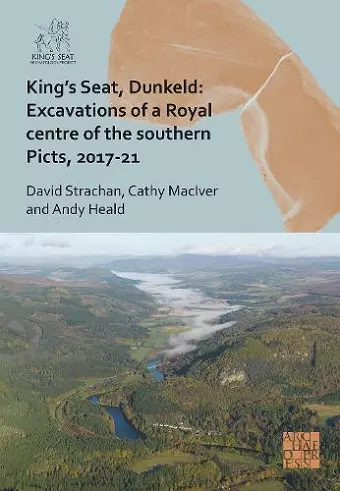King's Seat, Dunkeld: Excavations of a Royal Centre of the Southern Picts, 2017-21
David Strachan author Cathy MacIver author Andy Heald author
Format:Hardback
Publisher:Archaeopress
Publishing:30th Nov '25
£35.00
This title is due to be published on 30th November, and will be despatched as soon as possible.

It is remarkable, given Dunkeld’s importance in medieval Scotland, that so little was known of King’s Seat fort until the 1950s. While proposed as a royal Pictish ‘nuclear’ fort in the 1980s, it was so heavily overgrown as to be effectively lost to archaeology until 2015, when the local history society instigated a programme of community archaeology to explore its story. Led by Perth and Kinross Heritage Trust, working with AOC Archaeology Group, this included excavation that revealed a high-status Pictish fort complex. Like the classic sites Dundurn and Clatchard Craig, it had a high-status summit citadel surrounded by a hierarchy of connected out-works on lower terraces. LiDAR data revealed a previously unknown south enclosure, more than doubling its total footprint and raising questions about the role of such sites and the nature of Pictish settlement.
Controlling important routes from the north and west into the lower Tay region, King’s Seat was a Pictish ‘royal’ stronghold, estate, and production centre which was to attract an important early monastic foundation. While relatively short-lived, it produced evidence of specialist precious metalworking and trade and was the venue for feasting that saw the consumption of exotic luxuries such as Continental imports and glass vessels from Anglo-Saxon England. It was abandoned, rather than destroyed, perhaps as power passed to a lower site in a new architectural form, associated with the increasing power of the church and as larger polities developed. The relics of Columba were brought to Dunkeld in the 9th century, probably as much a result of tensions between Pictish royalty and the Gaelic church as the threat of Viking raids, before its ecclesiastical importance was eclipsed by St Andrews. Dunkeld takes its name from the Gaelic dùnCailleann or ‘fort of the Caledonians’ which undoubtedly refers to King’s Seat fort. It is apt that retention of this pre-Pictish name celebrates the link between later prehistory and medieval Scotland that is so well represented by the site itself.
ISBN: 9781805831174
Dimensions: unknown
Weight: unknown
246 pages